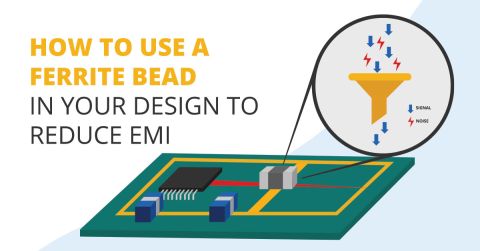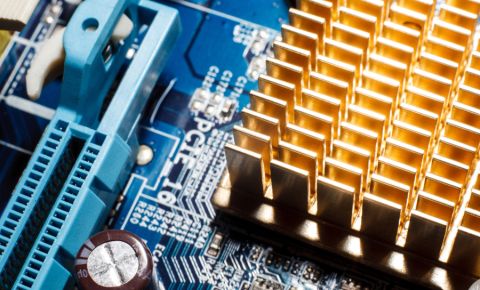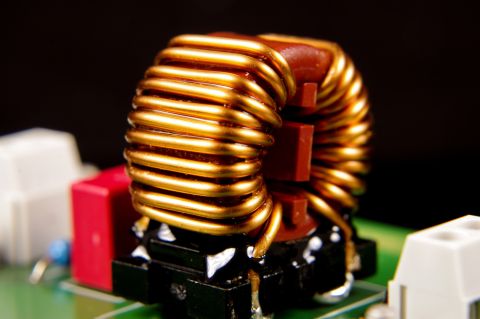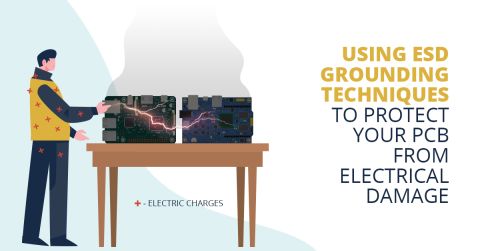The Right PCB Grounding Design Will Reduce Mixed-Signal EMI

Mixed-signal PCBs come in all shapes, sizes, and frequency/rise time combinations. Because of the various combinations of signal types being implemented on a single board, interference can suddenly become problematic if boards are not laid out and routed properly. The notion of "properly" in this case depends on the function of the board and the combination of signals involved. Sometimes, mixed signal boards that combine low-speed digital, high-speed digital, and RF onto a single PCB will create much less challenging noise problems than analog interface boards operating at multiple low frequencies.
The key to solving these noise challenges is to ensure you implement the right grounding strategy to support lwo noise in your routing and layout. The guidelines shown below are intended to give mixed signal designers an overview of the multiple strategies available for different types of mixed-signal PCBs, and specifically for addressing signals in certain frequency ranges. As we'll see below, certain grounding strategies are more practical for different frequency ranges as they can help prevent electromagnetic interference (EMI) from arising between different circuits on the board.

Some Options for Mixed-Signal Grounding
You know that grounding solutions will often need to be specifically tailored for mixed-signal PCBs, but nevertheless, there are several “best practices” that can get you part of the way. In PCB grounding design, there are generally three options you'll want to use in your system:
- Bus Wire: For most PCBs used for mixed-signal systems, a bus wire is not a good solution. However, this is usually the option that most new designers will default to in order to define grounds and make connections. A bus wire’s return current impedance can be quite large at system frequencies, which creates very large loop inductances that easily receive high-frequency noise.
- Grounding Grid: A grounding grid is sometimes used in two layer PCBs that don’t have enough space for a full PCB ground plane, but that can’t accept the voltage drops or large return path inductacnes associated with a bus wire. The grid does not have to be a square mesh, but it should have as much area as possible. A larger area will reduce grid impedance and allow for more trace/via connections, which in turn shortens current return paths.
- Ground Plane: Normally, the best solution for grounding in a PCB is to just use a full ground plane. This means a 4-layer board will be needed at minimum if your design will include multiple signal layers.
None of these is defined in the schematic; they all exist in the white space around your components, and you will need to decide how to implement your grounding strategy once you get to the PCB layout.
Real grounding is not as easy as on schematics.
If you're unsure of what to do, such as in a 2-layer board, your best bet is to just use a uniform ground plane as this generally offers current return paths that are easiest to follow in the design. Additionally, a full ground plane will have more EMI shielding than a ground grid. Just like with a grid, care must be taken when connecting integrated circuits (ICs) to the PCB ground plane to ensure that return current paths do not cross. As is often the case, the “better” the solution, the more costly it will be. If you’re as frugal as a Quaker, calculating the impedance associated with using a bus wire or grounding grid may be worth your while.
PCB Grounding at Different Frequencies
With the above points in mind, what should you do with different types of boards and frequencies? The table below summarizes some of the strategies you might use in different frequency ranges. Note that we aren't considering different types of signals
|
|
|
|
|
|
|
|
|
|
|
|
|
|
|
|
|
|
In these different types of PCB grounding designs, we can see that the ground plane is the most universal solution. The large ground rail can also be acceptable to provide ground for multiple frequencies as long as it can provide easy connections to nets. Note that a star ground strategy can also be used with rails as long as different types of signals do not need to interact with the same component. Star grounding with large can allow for very low inductance ground connections, but you should place mixed-signal ICs very carefully to prevent interference (see below).
Some mixed-signal designs may use two separate grounding planes in an attempt to separate analog and digital circuits in order to reduce EMI. For more general systems, though, the two grounding planes can be merged, or one PCB ground plane can be used.
The goal in implementing any of these PCB grounding design strategies is to prevent AC and DC return current paths from crossing, which will result in crosstalk. This is easiest with a solid ground plane adjacent to signal layers, with all ground planes tied together with vias to the same reference potential. If there are gaps in a ground plane, such as near cutouts or if PWR/GND are mixed on the same layer, do not run traces over these gaps as the gaps will act like antennas.
Practical Tips for Mixed-Signal ICs
As was mentioned above, Mixed-signal ICs can introduce complications for PCB grounding design, and application notes for these components can sometimes recommend bad practices that create new nois. Different combinations of these require different solutions, so here are some tips when dealing with mixed-signal ICs.
PCBs with a Single Mixed-Signal IC
If you’ve designed audio circuits before you might be familiar with star grounds. When designing a PCB that has only one mixed-signal IC, a star ground can be a great solution. The star ground uses a single point as a reference instead of an entire plane layer. For ADCs/DACs, as well as some other mixed-signal chips, the manufacturer normally recommends that AGND and DGND pins be connected together outside of the chip; this connection is best implemented with a patch forming the star ground or directly into the ground plane. If you’re using two separate ground planes with a single mixed-signal IC, you can also tie the two chassis ground planes together at that point.
PCBs with Multiple Mixed-Signal ICs
If your printed circuit board is using more than one mixed-signal IC, a star ground is probably impractical. This is because you would need to tie the AGND and DGND from each IC together right outside each IC case, all at the exact same point; it's simply impractical and the best practice is to just use a single ground plane for everything. Only in the case where you have each of these ICs operating at different frequencies would you consider adding gaps to aid isolation, and even then you should obey the rule above to not route over these gaps.
Mixed-signal system grounds require careful layout planning, as return paths need to be checked to reduce EMI and crosstalk. When you're ready to implement a PCB grouding design in your mixed-signal board design, use the comprehensive set of CAD utilities in Altium Designer®. Once you're ready to release your fabrication data to your manufacturer, you can easily share and collaborate on your designs through the Altium 365™ platform. Everything you need to design and produce advanced electronics can be found in one software package.
We have only scratched the surface of what is possible to do with Altium Designer on Altium 365. Start your free trial of Altium Designer + Altium 365 today.











